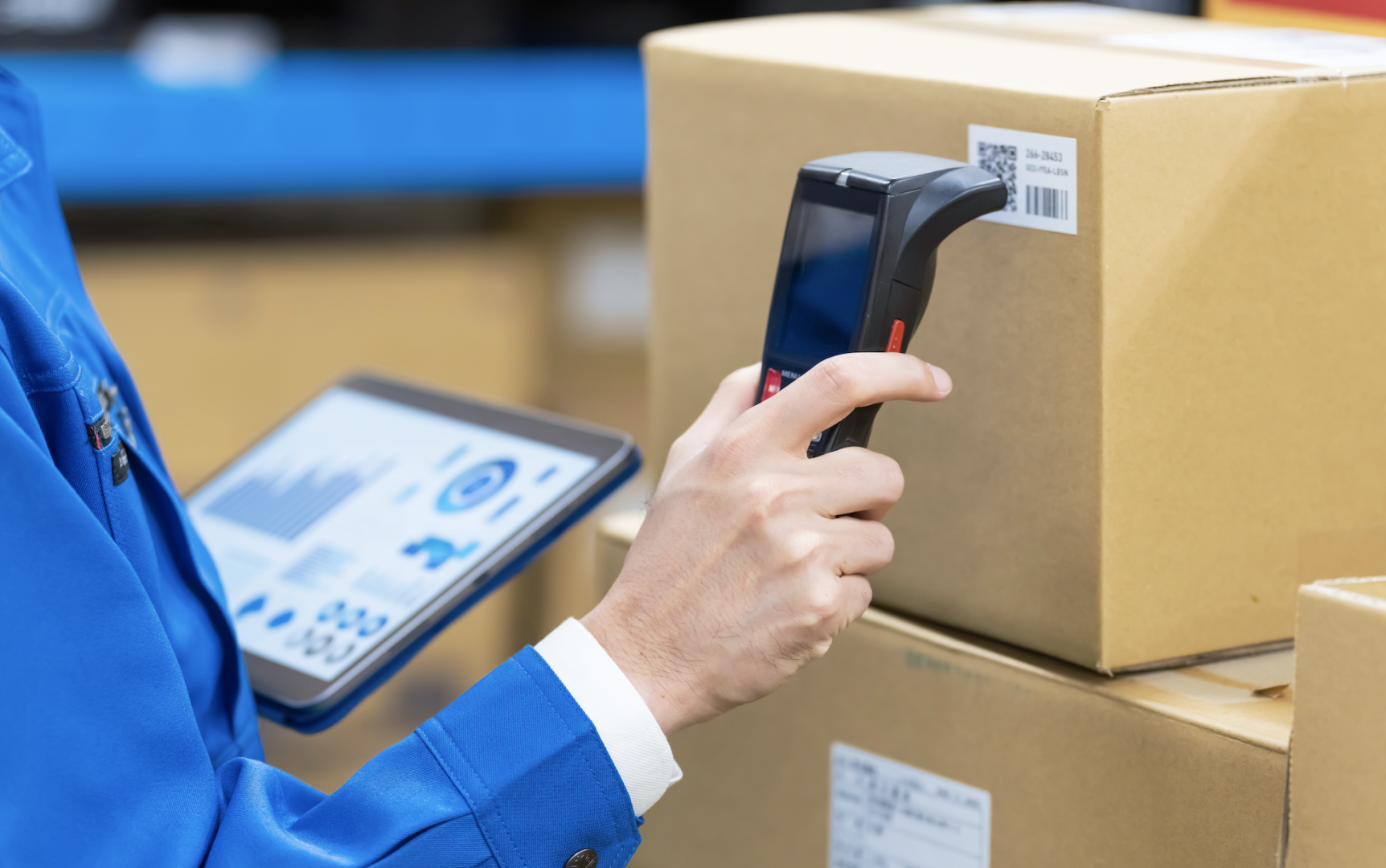
Modern warehousing is an intricate dance between suppliers and distributors, along with many other players.
Almost like magic, both groups manage to keep near-perfect track of their part, be it providing new inventory as it runs low or plucking individual pieces from a sea of products. A lot of the success of this tango is due to the use of Universal Product Codes (UPCs). In fact, warehousing and distribution centers would be very different places without these nifty little codes.
History of the UCP Label
The history of UPC labels began with the invention of the barcode by Norman Joseph Woodland and Bernard Silver in 1952, which was further developed into a standardized system in response to the grocery industry’s need for efficient inventory management. In 1970, IBM’s George Laurer created the Universal Product Code (UPC), officially adopted on April 1, 1973, with the first commercial scan occurring on June 26, 1974, at a supermarket. Initially met with skepticism, the UPC quickly proved its value by streamlining checkout processes and improving inventory control, leading to widespread adoption across various industries by the 1980s. This innovation revolutionized retail operations and set the foundation for advanced tracking and data systems in multiple sectors.
How Do UPCs Help Product Fulfillment?
Each UPC is a 12-digit code that’s represented by those familiar black bars and numbers you see on product packaging. Most of us know where to find the UPC on their favorite products, often because they’ve had to clip them for rebates or warranties. Fewer people realize that those little codes are like the Social Security Numbers of merchandise. Applied at manufacturing, the UPC tracks products throughout their lifecycle.
UPCs make it possible to house hundreds of thousands of products in a single warehouse environment. In many warehouses, products are divided into bins for distribution, each tagged with the UPC of the item inside. When the worker or inventory robot responsible for selecting merchandise for orders needs to locate an item, they need only choose it in the warehousing software to pinpoint its location.
Once at the correct bin, the UPC can be used to check items into and out of inventory, reducing loss and increasing inventory accuracy. It’s also a helpful check to ensure that the correct item has been selected, since the UPC will be visible on the product packaging.
Warehousing Without UPCs
A warehouse without unique tracking codes like UPCs would be a chaotic place. You’d have to be very careful about labeling products, especially if you sold a lot of things that looked very similar, like pharmaceuticals or nutraceuticals. Even then, errors would be commonplace and you’d spend even more money trying to deal with returns. In short, without UPCs, warehousing is a costly and frustrating business.
UPCs and portable barcode scanners make modern warehousing and distribution inexpensive and allow companies to expand their product offerings exponentially. Without having to rely on visual inspections and struggle with similar-sounding names, you can be confident that your products only go where they’re wanted.
Without the ivories and ebonies of the UPC, it would be impossible to maintain a significant amount of inventory at any given location or feel confident our online orders will always arrive perfectly picked. They’ve revolutionized business since the first UPC was scanned in 1974. From the factory to the warehouse and beyond, they give us a simple way to track an enormous array of products.
UPCs and Order Fulfillment: A Match Made in Heaven
If you’re working with a fulfillment partner or 3PL, UPCs are absolutely crucial. They help ensure the right products are picked, packed, and shipped to your customers. UPCs play a key role in maintaining order accuracy:
- Precise Product Identification: Each UPC uniquely identifies a specific product, reducing the chance of picking errors.
- Barcode Scanning: Warehouse staff can quickly scan items, minimizing manual data entry and human error.
- Variant Management: UPCs help distinguish between different versions of a product (e.g., sizes, colors), ensuring the correct variant is shipped.
- Easy Onboarding: New products can be quickly added to the fulfillment system using UPCs.
Let’s consider a hypothetical makeup brand called “GlamGlow Cosmetics” to illustrate how UPCs fit into 3PL fulfillment. GlamGlow Cosmetics is a growing online makeup brand that offers a range of products including lipsticks, eyeshadows, and foundations. As their sales increased, they decided to partner with a 3PL provider to handle their order fulfillment. Here’s how UPCs play a part in their fulfillment process:
- Product Registration:
GlamGlow assigns unique UPC codes to each of their products. For example:- Matte Lipstick (Red): 123456789012
- Shimmer Eyeshadow (Gold): 234567890123
- Liquid Foundation (Ivory): 345678901234
- Inventory Management:
When GlamGlow sends their products to the 3PL warehouse, each item is scanned and entered into the inventory system using its UPC. This allows for accurate tracking of stock levels. - Order Processing:
When a customer places an order on GlamGlow’s website for a red lipstick and gold eyeshadow, the order is automatically sent to the 3PL’s system. - Picking:
Warehouse staff use handheld scanners to locate and pick the correct items. They scan the UPC of each product to ensure they’ve selected the right ones. - Packing:
As items are packed, they’re scanned again to confirm the order contents are correct. - Quality Control:
Before sealing the package, a final UPC scan verifies that all items match the order details. - Shipping:
The package is shipped, and the UPC scans trigger inventory updates in real-time. - Returns:
If a customer returns an item, the 3PL can quickly process it by scanning the UPC, ensuring it goes back into the correct inventory slot. - Reporting:
GlamGlow can access reports showing which products (identified by UPCs) are selling fastest, helping with restocking decisions. - Multi-Channel Sales:
If GlamGlow decides to sell on Amazon too, the same UPCs can be used to track inventory across both their website and Amazon orders.
Ready to take your ecommerce business to the next level? Partner with ShipWizard and experience the difference that expert fulfillment can make! Contact us today to get started!









